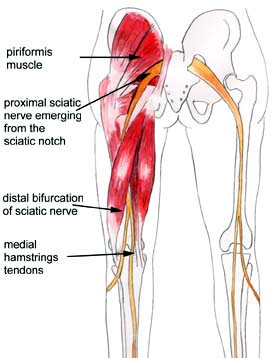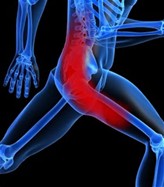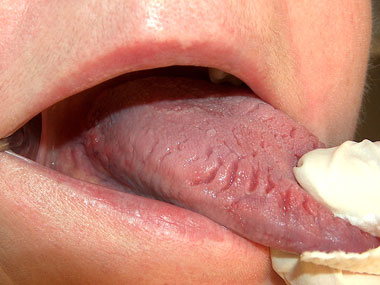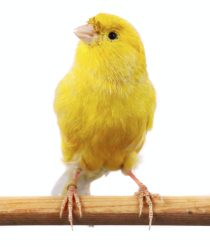Sciatica is characterized by pain, tingling, or numbness going down the leg from the lower back. It is common for the pain to be on only one side of the body, but in some cases both sides can be affected. The pain can be down the front, back or side of the leg. Weakness, numbness and tingling may also occur in the leg or foot. Lower back pain is sometimes present.

Where is the sciatic nerve located?
The sciatic nerveis the longest and largest spinal nerve in the body. This nerve starts at the back of the pelvis (sacrum), the sciatic nerve then runs from the back, under the buttock, and downward through the hip area into each leg, and then branches out into the lower legs and feet.
What causes sciatic nerve pain?
There are a number of common causes including:
Bulging Disc or Herniated Disc-This occurs when the soft jelly interior of the disc pushes out through a tear in the exterior disc.
Trauma-Such as sports injuries, car or motorcycle accidents
Spinal Tumors-Although rare, a tumor can cause compression on the sciatic nerve.
Spondylolisthesis-Usually affects the lumbar spine, where one vertebra slips over another.
Piriformis Syndrome-This develops when muscles spasm in the Piriformis muscle and compress the sciatic nerve.
Spinal Stenosis-Nerve compression disorder
Pelvic injury or fracture-Falling or even twisting the pelvis while lifting can cause sciatic pain.
How is sciatica diagnosed?
Sciatica is diagnosed by your doctor through a physical and medical history. Medical tests may be ordered including x-rays, CT scans or MRI’s to help determine the potential cause of the problem.
Common forms of treatment
There are numerous treatment options for sciatica based on the origin of the problem. Treatments include, but are not limited to:
Chiropractic Care
Acupuncture
Acupressure
Yoga
Massage
Ice or Heat
Topical Preparations
Muscle Relaxants
Pain Relievers
Exercise
Physical Therapy
Pilates
Radio Frequency Infections (RF Therapy)
Surgery
Simple massage techniques at home for relief
Finding a massage therapist familiar with sciatica is a wonderful option. Ask them about specific stretches and self-massage that you can do at home to provide relief when you need it.
- Palm and Thumb Massage. Place the palms of your hands on your lower back. Rub the pelvic area towards your spine and down towards your buttocks. Next place your hands at your waist with your thumbs on the ropelike muscles near the spine. With your fingers wrapped around your sides. Using your thumbs, apply a firm and steady pressure toward the spine on the outer edges of the ropey muscles, so that your thumbs are about four inches apart. Apply pressure without causing discomfort.
- Tennis Ball Massage. Using tennis balls is an easy way to apply acupressure to your lower back. Place the two tennis balls close together in a towel or sock. Place them on the floor. Sit down on the floor, with your knees bent and feet flat on the floor, place the balls behind you. Gradually recline your body until you lying on your back on the floor, with the balls on the sore area of your back. When the back tension is relieved, move the balls to another area of your back.
- Knuckle Pressure-Lie on your back, with your knees bent and your feet flat on the floor. Make fists and carefully place them on the left and right side of your lower back. Position your fists so your palms are facing down and your knuckles are against your back. Your fists should be between the spine and your lower back muscles. Rest in this position if you can for one minute. Slowly roll onto your side into a comfortable fetal position, using your arm under your head (as a pillow). Rest in this position for five minutes before getting up.
4. Sciatica Stretches
Consider investing in personal care equipment
If you have any type of back, hip or leg pain you might consider purchasing some items to help relieve the pain with acupressure.
Tennis balls-as described in #1 above.
Kong dog toy-this wedge shaped toy can be placed under your hip, while you lie on your side. It increases pressure as you roll on it.
Spinal rollers-this hard tube is covered with a thick foam. These work well for hip pain.
Knobble– is for more focused pressure applied to specid spots on the hip.
Body back buddy-this is my favorite tool for acupressure. It is an S shaped tool with knobs of various sizes and shapes for different pressure points on the body.
When moving hurts
The challenge with sciatica and with any type of pain is movement. Lying down for extended periods of time can cause muscles to become stiff and weak. Exercise will increase blood flow, provide additional oxygen to the body and as the muscles warm up, they will also loosen up.
If exercise is a challenge, consider something with a low impact such as swimming, water aerobics or yoga. As always, before taking up any exercise or self-treatment talk with your health practitioner first.
Love this body back buddy “S” cane. I have one and use it frequently for various acupressure points.
This article was originally posted at The Hearty Soul








